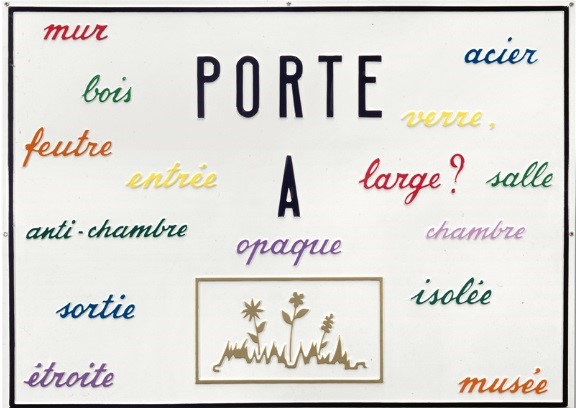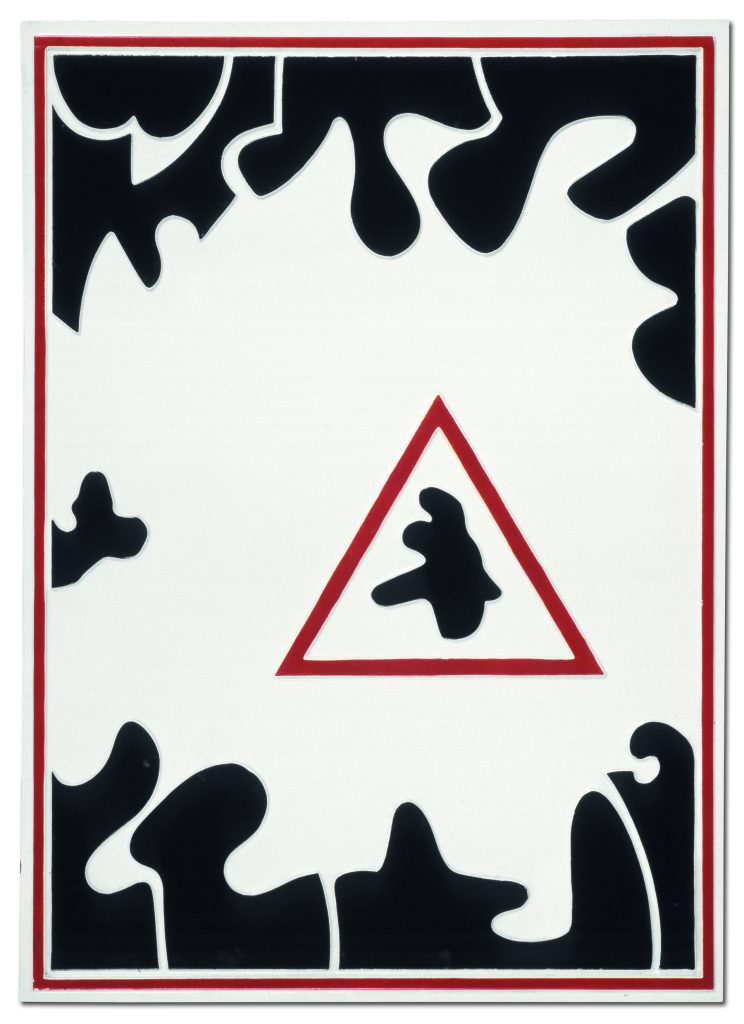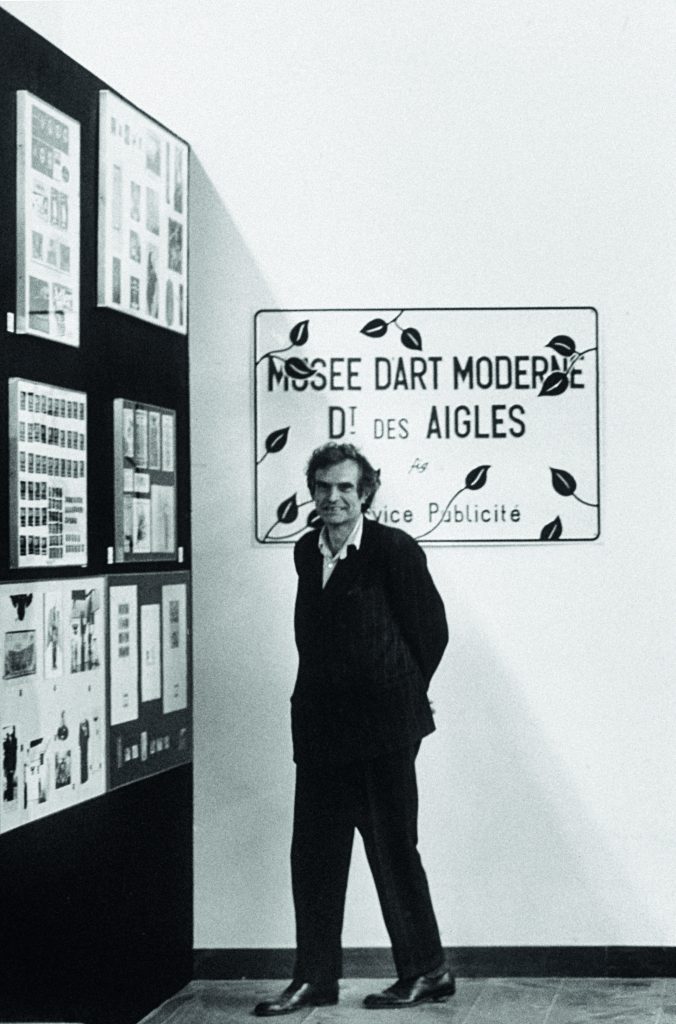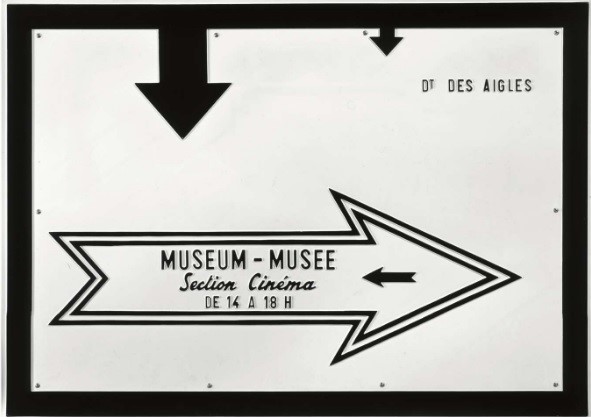Blazing rise and untimely departure. An artist, Marcel Broodthaers, and his Industrial Poems. At the top of the public scene during about twelve years. His brilliant production explores with humor the contradictions of art institutions. Museums, galleries: emblems of art. Or maybe machinic entities. Therefore, exposed to irony?
AN UNFORESEEN TURNING POINT
The artistic fame of Marcel Broodthaers constitutes an unexpected turning point. After a twenty-year period on the margins of the cultural industry. Period spent almost in poverty; as a poet and journalist.
His engagement with language, history and identity contributed to the definition of conceptual art. Fighting to free visual art from the constraints of easy sophistication and complacent ordinaryity.
Marcel Broodthaers (Saint-Gilles, 1924 – Cologne, 1976) is certainly one of the most articulate artistic personalities of the twentieth century. Is a poet and sociologist at the same time. As well as being among the greatest representatives of conceptual art.

ART, LANGUAGE AND COMMUNICATION
“Broodthaers has critically explored not only the relationship between art, language, and communication. But also, the mechanisms, including economic ones, that circulate around museums and art.”
His references range from René Magritte, to Kurt Schwitters, to Piero Manzoni (whom he met in 1962 in Brussels).
“Any object that’s a victim of its nature, even in a transparent portrait, the colour hides the canvas and the moulding hides the frame. An object is invisible when its shape is imperfect. For example, the egg and the mussel, the trout… Any object that’s a victim of its usage, even in a transparent portrait, the canvas hides the frame, and the colour hides the moulding… An object is invisible when its shape is perfect. As an example, the egg, the mussel, any object victimised by its function, even in a transparent frame, the portrait hides the display and the viewer hides the frame”

REVOLUTIONARY SURREALISM
As a young man, Marcel Broodthaers was a brilliant artist. Maybe inclined towards the Academy. Broodthaers went in political and social issues; from an early age. Around the age of 16, he became involved with the Surréalisme Revolutionnaire movement. A branch of the surrealists in Belgium. In addition, he joined the anti-Nazi resistance (during World War II).
Broodthaers worked as a poet from the age of 20 until the age of 40. Between 1943 and 1951, he was a member of the Communist Party, and his written works dealt with how creativity and cultural expression could influence society. In 1945, Broodthaers befriended René Magritte, whose exploration of the boundaries and meaning of language greatly influenced him.
MON LIVRE D’OGRE
That same year, his poems appeared in print for the first time, although he did not publish an entire volume of poems until “Mon Livre d’Ogre”. Came out in 1957.
He produced over 50 films between 1967 and ill 1976, the year of his death. In the twelve years of his career, he staged about 70 solo exhibitions.

BROODTHAERS’ HERITAGE
Broodthaers’ heritage can be seen in the many postmodern installations and conceptual pieces that continue to pervade the contemporary art scene. As well as in art, which takes the visual experience to an interactive level. For example, the generation of Young British Artists is somehow richly influenced by the work of Broodthaers. Tracey Emin’s installations (including My Bed, 1998), echo Broodthaers’ La Salle Blanche (1975). In recreating an artist’s lived experience. His neon signs use processes of fabrication and language to transfer the meaning of the work to the viewer.
DAMIEN HIRST AND MATTHEW BARNEY
The staging of objects to create meaning is also present in the work of Damien Hirst. Or in the artworks of American artist Matthew Barney. In other words, the idea of exploring themes of experience can be attributable to Broodthaers. As can the search for humanity, in almost surreal scenarios.
THE INDUSTRIAL POEMS OF MARCEL BROODTHAERS
MASI Lugano dedicates to this master of the twentieth century “Marcel Broodthaers – Industrial Poems”; in an unprecedented exhibition. Housed in the exhibition venue of the LAC, are presented the main motifs of the famous series of plates. Created by Broodthaers between 1968 and 1972.

THE EXHIBITION
The exhibition is organized in collaboration with WIELS, Brussels. Curated by Dirk Snauwaert and Charlotte Friling. The presentation, at MASI Lugano, is curated by Francesca Benini. In collaboration with Maria Gilissen Broodthaers, Marie-Puck Broodthaers and Succession Marcel Broodthaers.
MASI | LAC
from 01.05 to 13.11.2022
Piazza Bernardino Luini 6, 6900 Lugano





